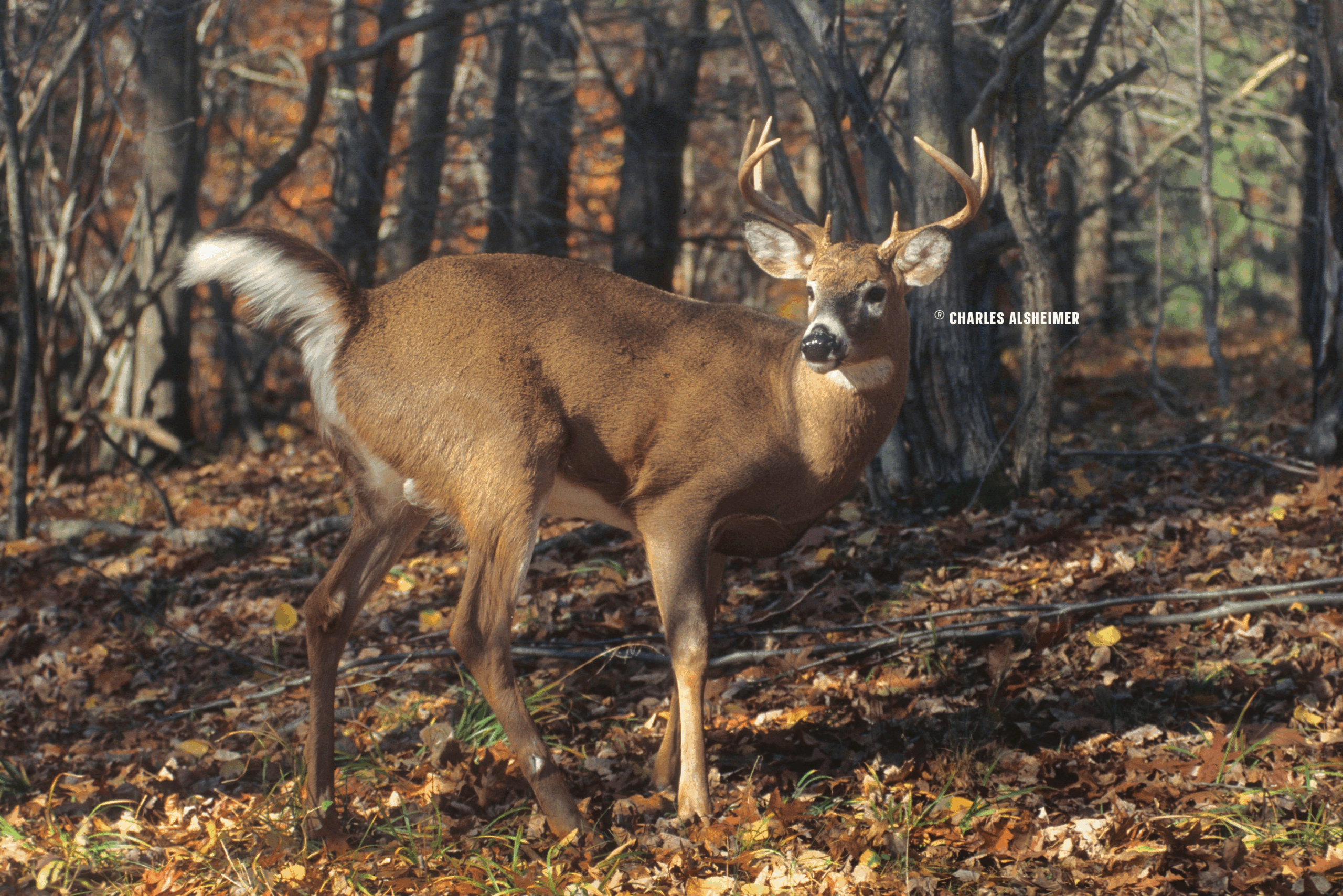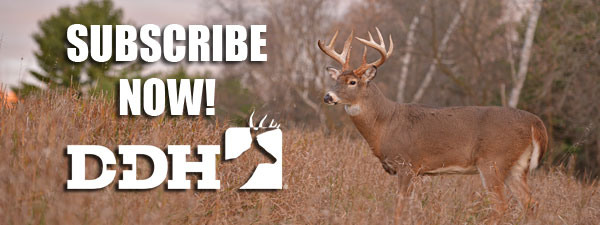During the summer of 1995, my family began raising white-tailed deer to research their behavior and nutritional needs inside a 35-acre enclosure we built on our farm. It contained a stream, a pond, mixed hardwoods, an apple orchard and 11 food plots. I had hunted wild free-ranging whitetails throughout North America and wanted to make sure that any buck we raised was what I call a real-world deer. I wasn’t interested in having deer that were genetically bred for big antlers, so the three bucks and two does we started with came from the Avery Estate located in the heart of New York’s Adirondack Mountains.
Once established, no other deer were purchased and no hunting was allowed in the enclosure. Except for the deer New York State mandated we test yearly for TB and CWD, all the deer raised were allowed to live out their lives in a near-wild setting. As a result, over the past 20 years we’ve learned much about whitetails, with one of the most impressive things being what can be expected in antler growth if a buck is allowed to live to full maturity.
Realistic Antlers
“Can you tell from a yearling buck’s antlers what he will look like when he matures? “When do bucks grow their largest antlers?” These are questions often asked.
Having hunted free-ranging whitetails from New York to Saskatchewan to Texas and many places in-between, I’ve always felt that if a whitetail can grow 140 inches of antlers by the time he is 4½ years old he’s a true trophy. To illustrate, let’s use a human analogy.
The average height of an American man is 5 feet, 10 inches. A mature buck with 140-inch antlers is similar to that of the average-height man. However, not all bucks fall into what is considered average. Just as there are 5- to 7-foot-tall men, there are white-tailed bucks that top out anywhere from 115 to 180 inches of antler, with even fewer breaking the 200-inch barrier in the wild. So, in most regions of America, mature bucks in the 140- to 150-inch range are realistic.
At What Age Do Bucks Peak?
Many think it’s common for bucks to grow their best antlers by the time they reach 4½ years of age. If that is so, I’ve never seen one in the wild. It’s been my experience that (on average) white-tailed bucks grow their largest antlers at age 7½. The earliest I’ve ever seen a buck reach full antler potential is at age 6½, and the oldest 9½ years of age.
What Can Be Expected
Many things go into allowing a buck to reach his full antler potential; nutrition, habitat, management and age are all factors, with age being the biggest. It’s been during only the past 20 years that more and more landowners and deer managers have taken a keen interest in seeing older bucks in the population. Prior to this, most state buck harvests consisted of yearling and 2½-year-old bucks, which is long before a buck reaches his body and antler maturity. To illustrate what can be expected, these photos show three different bucks I raised over the years. All lived past 10 years of age and represent what can be expected if a deer herd is managed properly, has quality habitat and is allowed to reach full maturity.
Buck No. 1:
This is a classic example of a buck reaching peak antler growth at age 7½. Fathered by one of the Adirondack bucks we started with, this buck is typical of many yearlings in that he was a 3-pointer when he grew his first set of antlers. He’s also an example of why you should never judge a buck’s antler potential based on what he looks like as a yearling.

When this buck reached 2½, his antlers scored 105 Boone and Crockett Club inches. When he was 4½, he was a 142-inch 10-pointer. He grew his largest antlers at 7½ years of age, scoring 164 B&C as a near perfect 10-pointer. His massive body, coupled with 160+inch antlers put him in a class with bucks found anywhere in North America. He died of natural causes at age 9, when his antlers scored 147 inches B&C.

Buck No. 2:

This buck is an example of a late bloomer. As a yearling he was a crotch-horn 4-pointer, quite typical of a 1½-year-old buck. When he reached 2½ years of age, he was a 100-inch 8-pointer, offering little indication of what he might become. By the time he reached 4½ years of age, he had blossomed to a 140-inch buck. By the time he was 7½ years old, his antlers had 12 points over 1-inch long, with a lot of mass. His B&C score at age 7½ was 157, making him a very impressive buck. Though his body mass began to decrease at age 8, his largest antlers didn’t. He grew his largest antlers when he was 9½ years old, scoring 164 B&C as a typical 12-pointer. This buck never had long antler tines (none ever longer than 8 inches), but what he lacked in tine length he more than made up for with antler mass.

Buck No. 3:

Don’t be fooled into thinking that great-looking yearlings, 2- or even 3-year-olds will blossom into giant-racked bucks when they reach full maturity. This is an example of how a buck’s antlers can go in the wrong direction long before he hits 7½ years of age. Fathered by a buck who topped out at 169 inches at age 6½, this yearling had all of the genetic markings of great antler potential as a yearling 7-pointer. As a 2½-year-old, he grew perfect 8-point antlers, scoring 105 inches. At 4½ he grew 135-inch, 11-point antlers, then things began to flatten out. At age 6½ he grew his largest antlers, scoring 136 inches B&C, then proceeded to go downhill. At age 7½ his 8-point antlers scored 130 inches and illustrated that great looking yearlings don’t always turn out the way you think they will.

The great takeaway from this pictorial is this: Of all the things required to grow better antlers, age is the key. Allowing bucks to age past 3½ years old not only allows for the possibility of impressive antlers but also provides the challenge of hunting mature bucks that have been allowed to pass on their genetics for a number of years. The bottom line is that letting them go so they can grow means better deer and better deer hunting.
— Charles Alsheimer (1947-2017) was a deer behavior expert, writer and photographer from western New York.


